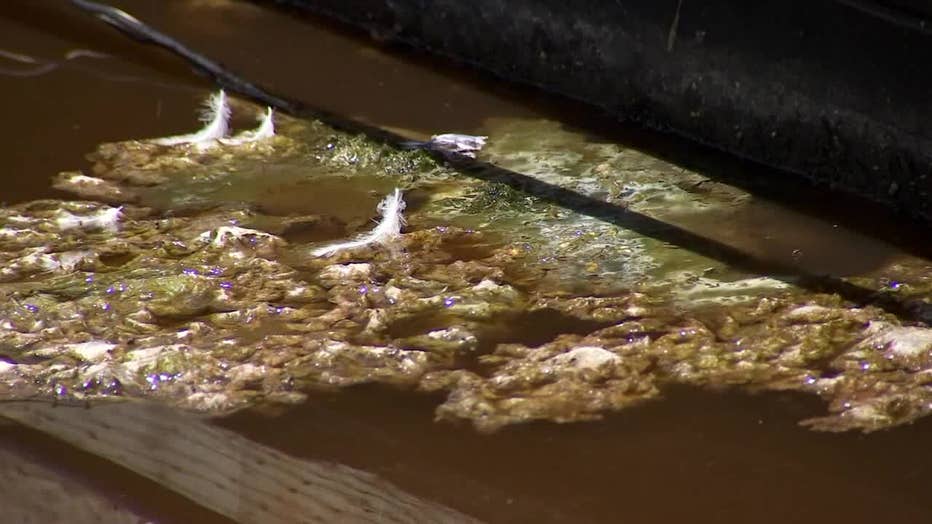Fish kills: Deadly Bay Area algae blooms could last for weeks

Dead fish are being found at Lake Merritt and throughout Bay Area
Dead fish are being found around parts of the Bay Area and experts point to a deadly algal bloom as the cause. Greg Liggins reports
ALAMEDA, Calif. - The red algae bloom in the San Francisco Bay killing hundreds, if not thousands, of fish since last week likely won't end for at least a couple weeks, as the warm weather gets hotter going into Labor Day weekend, according to experts.
Environmental agencies held a press conference Monday afternoon saying the bloom - which has been reported from the Dumbarton Bridge to Oakland's Lake Merritt and the Alameda Estuary, Oyster Point, Baywinds Park in Foster City, Hayward, Keller Beach, Point Molate, and Sausalito - may come from a harmful species called Heterosigma akashiwo.
It's a swimming marine algae that forms toxic surface aggregations.
The species name is derived from "red tide" in Japanese.
"We do not know how long it's going to last," said Eileen White, the executive officer for San Francisco Bay Regional Water Board. "We're still studying it and monitoring it on a regular basis. Unfortunately, we have not seen an algae bloom of this particular species of this magnitude in San Francisco Bay ever before, that we know of.
"It's suspected it will probably last a couple weeks with the warm weather," White said. "Algae blooms usually happen in warm weather."
The bloom was first observed in July in the Alameda/Oakland area. The algae may be impacting dissolved oxygen concentrations which could be contributing to the fish deaths.
MORE: Dead fish washing up in Lake Merritt and parts of bay
Officials said it's unclear how toxic the bloom is.
Crews of biologists are gathering information and fish necropsies are being scheduled.
They also don't have an accurate count of how many fish are dead; the official count as of Friday was at least 100 striped bass and less than 10 sturgeon and mussel deaths.
There have also been reports of rays dying in Lake Merritt.
James Hobbs, Environmental Program Manager of the Bay Delta Region of the California Department of Fish and Game, said dozens of sturgeon have been killed - at least seven white sturgeon in San Pablo Bay - and at least hundreds of striped bass just between the San Mateo and Dunbarton bridges.
"Those numbers are probably gross undercounting of what's total in the bay," Hobbs said. White said it's the most dense algae bloom in the South Bay in more than 40 years Though Heterosigma akashiwo isn't known to cause illness in humans, it can cause eye and skin irritation and the water should be avoided, White said.
"We do know with warming climate we had the driest January through March on record," said White. "That that may have been a contributing cause, but we're not sure what the cause is."
No recommendations have been issued regarding eating fish caught in the by, though an annual quarantine regarding mussels along the California coast is now in place.
"This type of organism has been detected in San Francisco Bay before, but not to this level," said Jenna Rinde, Senior Environmental Scientist with the California Department of Fish and Wildlife. "We really don't understand mechanisms that's causing these fish kills."

Toxic algae blooms are found in the Bay Area including in this Alameda lake. August 2022

Toxic algae blooms are found in the Bay Area including in this Alameda lake. August 2022

Toxic algae blooms are found in the Bay Area including in this Alameda lake. August 2022

